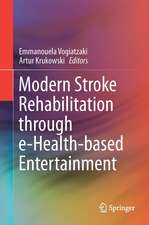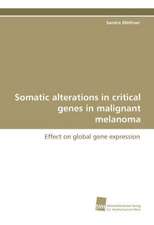Regenerative Engineering
Editat de Cato T. Laurencin, Yusuf Khanen Limba Engleză Paperback – 6 noi 2018
Regenerative medicine focuses on the biological aspects of tissue regeneration via stem cells, factors, and cytokines, while tissue engineering focuses on the integration of materials science and life sciences. This book integrates these two areas, presenting each concept in the framework of regenerative engineering.
Features:
- Covers a number of cutting-edge topics related to regenerative medicine and tissue engineering
- Includes an introductory chapter on materials science
- Features a number of the contributors who are world-class researchers, one of whom is Dr. Anthony Atala, whose work dealing with organ regenerative engineering was featured on Sixty Minutes
- Incorporates problem-based learning throughout the text, which is not hypothetical but based on actual biological, engineering, or clinical scenarios
| Toate formatele și edițiile | Preț | Express |
|---|---|---|
| Paperback (2) | 314.24 lei 6-8 săpt. | |
| CRC Press – 2 oct 2023 | 314.24 lei 6-8 săpt. | |
| CRC Press – 6 noi 2018 | 329.91 lei 6-8 săpt. | |
| Hardback (2) | 858.73 lei 6-8 săpt. | |
| CRC Press – 20 iun 2013 | 858.73 lei 6-8 săpt. | |
| CRC Press – mai 2018 | 1250.81 lei 6-8 săpt. |
Preț: 329.91 lei
Preț vechi: 424.46 lei
-22% Nou
Puncte Express: 495
Preț estimativ în valută:
63.14€ • 65.67$ • 52.12£
63.14€ • 65.67$ • 52.12£
Carte tipărită la comandă
Livrare economică 15-29 aprilie
Preluare comenzi: 021 569.72.76
Specificații
ISBN-13: 9781138075177
ISBN-10: 1138075175
Pagini: 435
Ilustrații: 114
Dimensiuni: 178 x 254 mm
Greutate: 0.45 kg
Ediția:1
Editura: CRC Press
Colecția CRC Press
ISBN-10: 1138075175
Pagini: 435
Ilustrații: 114
Dimensiuni: 178 x 254 mm
Greutate: 0.45 kg
Ediția:1
Editura: CRC Press
Colecția CRC Press
Cuprins
Regenerative Engineering: The Future of Medicine. Cell Biology. Stem Cells and Tissue Regeneration. Introduction to Materials Science. Biomaterials. In Vitro Assessment of Cell–Biomaterial Interactions. Host Response to Biomaterials and Its Implications in Regenerative Engineering. Organ Regenerative Engineering: Cell Sources, Considerations, and Strategies. Cardiovascular Regenerative Engineering. Bone Regenerative Engineering. Engineering Tissue-to-Tissue Interfaces. Neural Regenerative Engineering. Ligament Regenerative Engineering. Skeletal Muscle Regenerative Engineering. Engineering Limb Regeneration: Lessons from Animals That Can Regenerate. Index.
Notă biografică
Cato T. Laurencin, MD, PhD, earned his BSE in chemical engineering from Princeton University, his PhD in biochemical engineering/biotechnology from the Massachusetts Institute of Technology, and his MD magna cum laude from Harvard Medical School. Dr. Laurencin is currently the chief executive officer of the Connecticut Institute for Clinical and Translational Science and director of the Institute for Regenerative Engineering at the University of Connecticut. He previously served as the vice president for health affairs and dean of the School of Medicine. He is a university professor and holds the Van Dusen Endowed Chair in the Department of Orthopaedic Surgery.
Yusuf Khan, PhD, earned his master’s degree and PhD from Drexel University in biomedical engineering. He is currently an assistant professor at the Institute for Regenerative Engineering and the Department of Orthopaedic Surgery at the University of Connecticut Health Center. He has an appointment in the Department of Chemical, Materials, and Biomolecular Engineering and is part of the Department of Biomedical Engineering within the School of Engineering at the University of Connecticut. His research interests include musculoskeletal tissue regeneration using implantable biodegradable scaffolds, development of composite structures for bone regeneration, and the development of clinically relevant healing modalities using ultrasound.
Yusuf Khan, PhD, earned his master’s degree and PhD from Drexel University in biomedical engineering. He is currently an assistant professor at the Institute for Regenerative Engineering and the Department of Orthopaedic Surgery at the University of Connecticut Health Center. He has an appointment in the Department of Chemical, Materials, and Biomolecular Engineering and is part of the Department of Biomedical Engineering within the School of Engineering at the University of Connecticut. His research interests include musculoskeletal tissue regeneration using implantable biodegradable scaffolds, development of composite structures for bone regeneration, and the development of clinically relevant healing modalities using ultrasound.
Recenzii
"This is a good book to have on your bookcase so that it can be easily handed to a student or young investigator. I foresee this book as a stepping off point to stimulate interest in a field that is rapidly evolving and is likely to have a significant impact on our ability to treat disease, disfigurement and trauma in the future."
—Biomaterials Forum, Fourth Quarter 2013
"This book gives historical precedence for tissue engineering while providing the most up-to-date clinical examples. It is nice to see tissue engineering strategies that are tissue-specific, as the design requirements of clinical solutions will depend largely on the tissue of interest. This book is ideal for introductory coursework or reference for the initiate in the field of tissue engineering. … The authors are leaders in their respective fields and have knowledge of both the breadth and depth of tissue engineering strategies. The text is well-organized and will fit well into most introductory biomaterials/tissue engineering courses around the country."
—Laura Suggs, University of Texas at Austin, USA
"The text is well written and succinct. The references are up to date. Given the background of the senior editor as an orthopaedic surgeon, clinical details are provided in most of the chapters in a highly readable manner, and this can be useful for the non-clinician user."
—The Journal of Histotechnology, March 2014
—Biomaterials Forum, Fourth Quarter 2013
"This book gives historical precedence for tissue engineering while providing the most up-to-date clinical examples. It is nice to see tissue engineering strategies that are tissue-specific, as the design requirements of clinical solutions will depend largely on the tissue of interest. This book is ideal for introductory coursework or reference for the initiate in the field of tissue engineering. … The authors are leaders in their respective fields and have knowledge of both the breadth and depth of tissue engineering strategies. The text is well-organized and will fit well into most introductory biomaterials/tissue engineering courses around the country."
—Laura Suggs, University of Texas at Austin, USA
"The text is well written and succinct. The references are up to date. Given the background of the senior editor as an orthopaedic surgeon, clinical details are provided in most of the chapters in a highly readable manner, and this can be useful for the non-clinician user."
—The Journal of Histotechnology, March 2014
Descriere
Regenerative engineering is the intersection of regenerative medicine and tissue engineering. Regenerative medicine focuses on the biological aspects of tissue regeneration via stem cells, factors, and cytokines, while tissue engineering focuses on the integration of materials science and life sciences. This book integrates these two areas, presenting each concept in the framework of regenerative engineering. Through the combination of fundamental lecture-based teaching and problem-based learning approaches, it is the goal of this textbook to develop students into future researchers capable of completing the translation of their work from the benchtop to the bedside.















